30 Common Backyard Birds in California (With Pictures)
Last Updated on
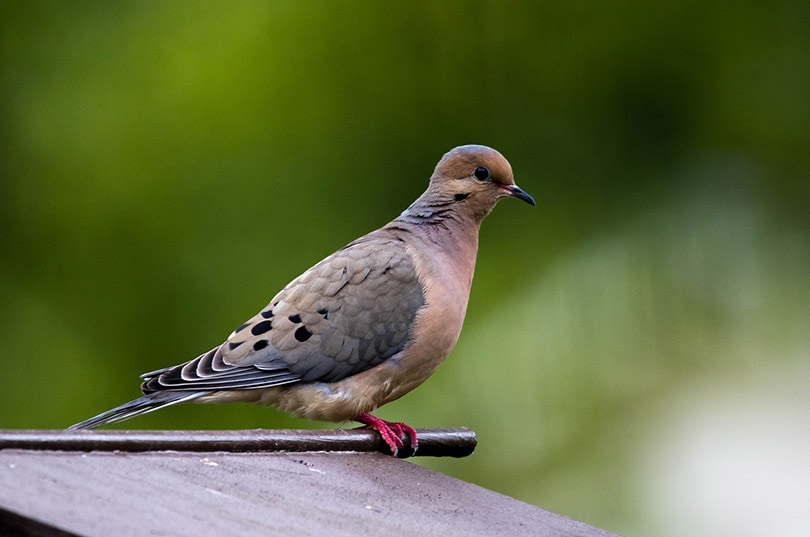
California is an incredibly ecologically diverse state, so it’s no surprise that there are so many different bird species there. If you are trying to identify a bird that you’ve already spotted or just want to know what kind of birds might visit your backyard, we broke it all down for you here.
Here, we highlighted 30 different common backyard bird species in California, as well as the different environments that you can expect to find them in.

The 30 Most Common Backyard Birds in California
1. House Finch
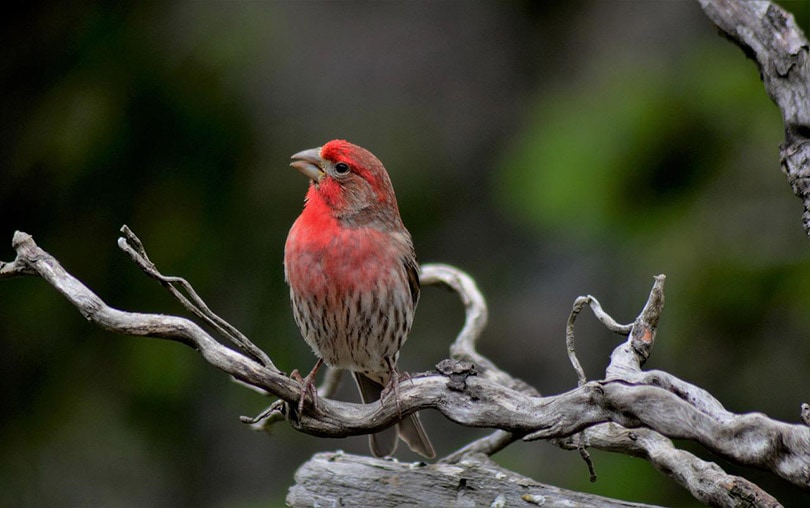
| Scientific Name | Haemorhous mexicanus |
| Population Size | 267 million to 1.7 billion |
| Habitat | Desert, desert grassland, chaparral, oak savannah, streams, and open forests |
| Diet | Weed seeds, flower parts, berries, insects, and regurgitated seeds |
While getting an exact estimate of the total number of house finches out there is challenging, one thing is clear, there are many of them. They thrive in a wide array of environments, so you can spot them in tons of different areas in California.
2. White-Crowned Sparrow
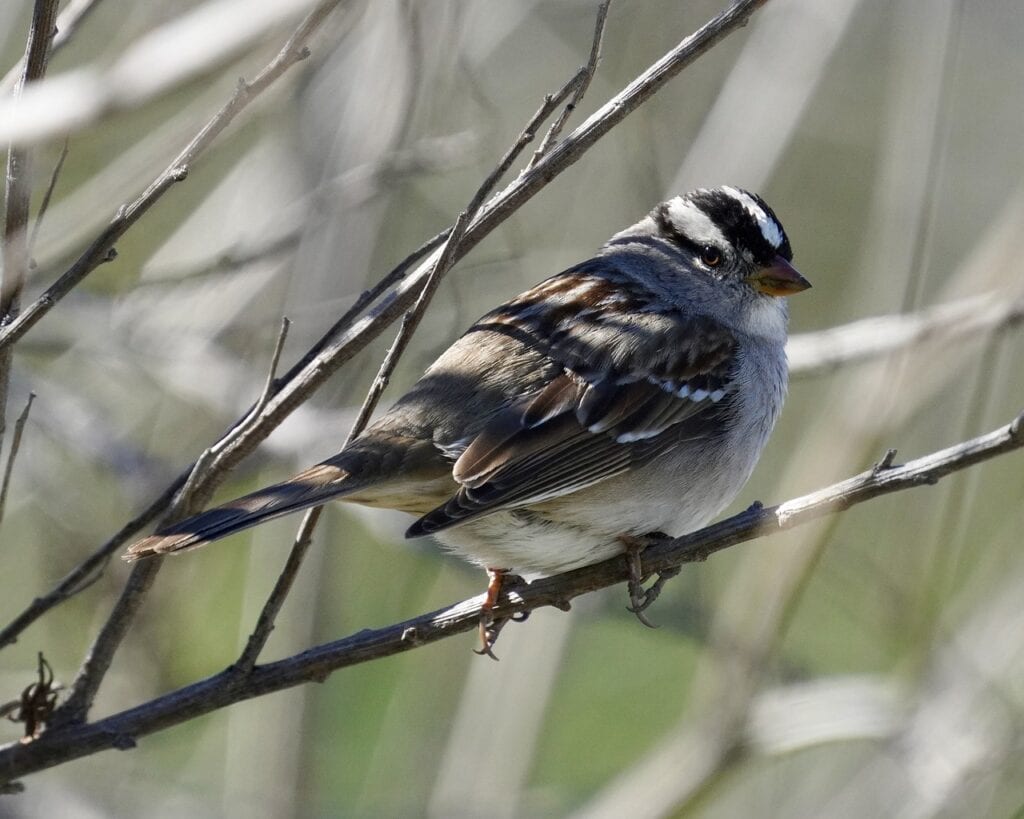
| Scientific Name | Zonotrichia leucophrys |
| Population Size | 79 million |
| Habitat | Tundra, high alpine meadows, and forest edges |
| Diet | Seeds, especially sunflower seeds |
If you want to see white-crowned sparrows in your California yard, just sprinkle sunflower seeds around the base of your bird feeders. These birds love the tough seeds, and they’ll eat them even if they’re just passing through an area.
3. Yellow-Rumped Warbler
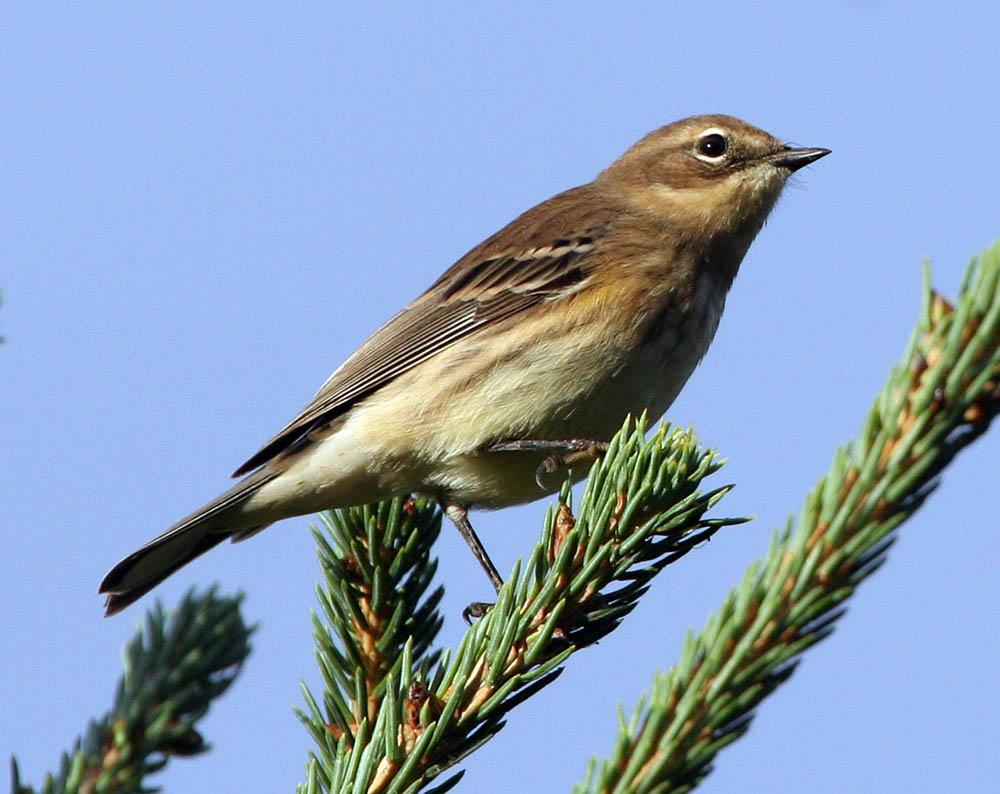
| Scientific Name | Setophaga coronata |
| Population Size | 130 million |
| Habitat | Conifer forests |
| Diet | Insects and berries |
The yellow-rumped warbler prefers forest environments, and there are plenty of those in California. They’ll also pass through other areas, and with over 130 million yellow-rumped warblers out there, you’re sure to spot a few in California if you’re looking.
4. Song Sparrow
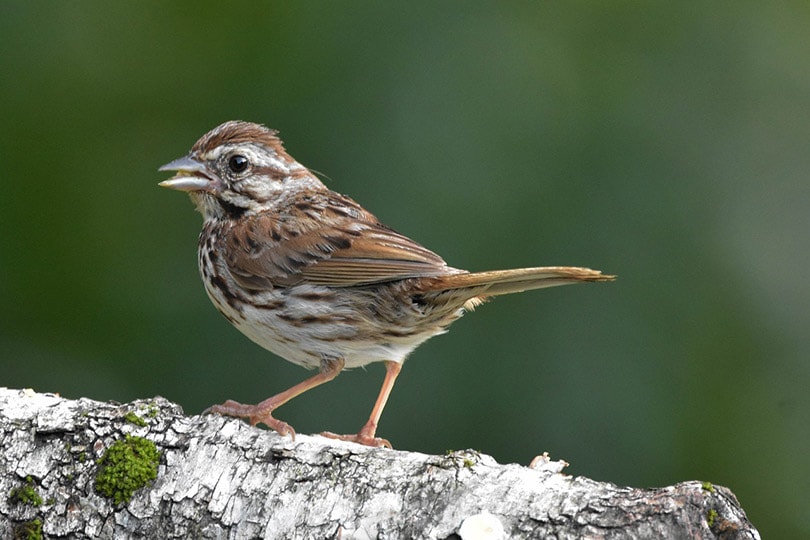
| Scientific Name | Melospiza melodia |
| Population Size | 130 million |
| Habitat | Fields, by streams, marsh edges, woodland edges, and well-vegetated gardens |
| Diet | Insects and seeds |
Whether you live in an area with natural shrubberies or a place that’s more open, the song sparrow is a bird that you might see. They are extremely versatile, and plenty of people have seen them build their nests in well-vegetated gardens.
5. Black Phoebe

| Scientific Name | Sayornis nigricans |
| Population Size | 6 million |
| Habitat | Near water, streams, ponds, and lakes, sometimes in city parks |
| Diet | Insects |
The black phoebe might be one of the least populous bird species on this list, but it still has over 6 million birds in their population. They typically live near slow-moving water in the wild, but some city parks meet these requirements too. Anywhere there’s an abundance of flying insects is where the black phoebe wants to hang out!
6. Mourning Dove
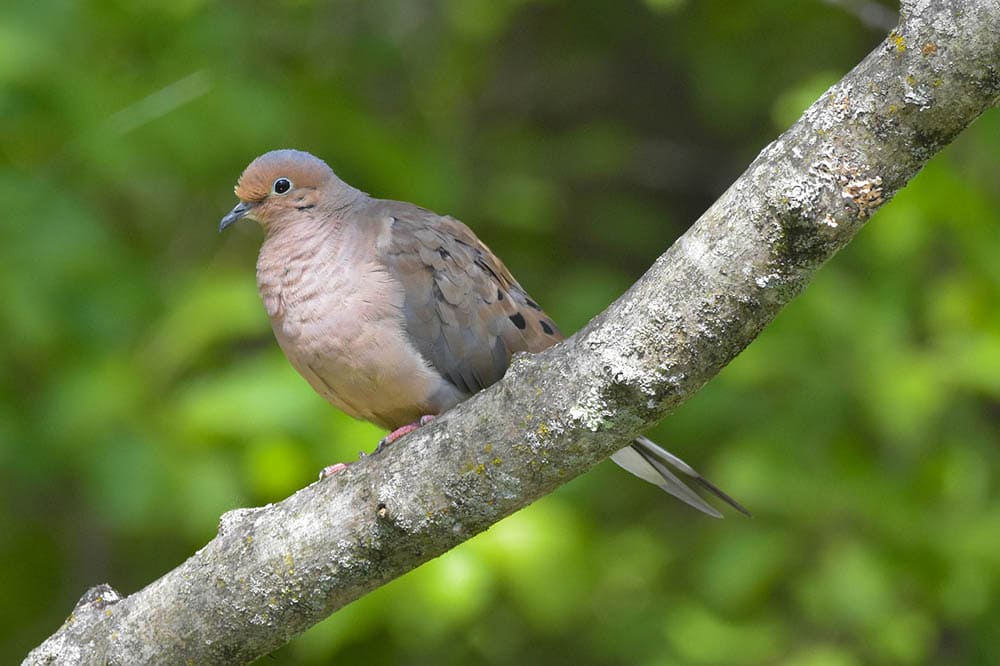
| Scientific Name | Zenaida macroura |
| Population Size | 350 million |
| Habitat | Forest clearings, farmland, suburbs, prairies, and deserts |
| Diet | Seeds |
Few birds are as well-known as the mourning dove. They absolutely love open spaces, and they’ll find their way into the suburbs all around California. If you’re trying to attract a few to your yard, scatter seeds around the bottom of your bird feeder, as mourning doves prefer to stay low to the ground.
7. Anna’s Hummingbird
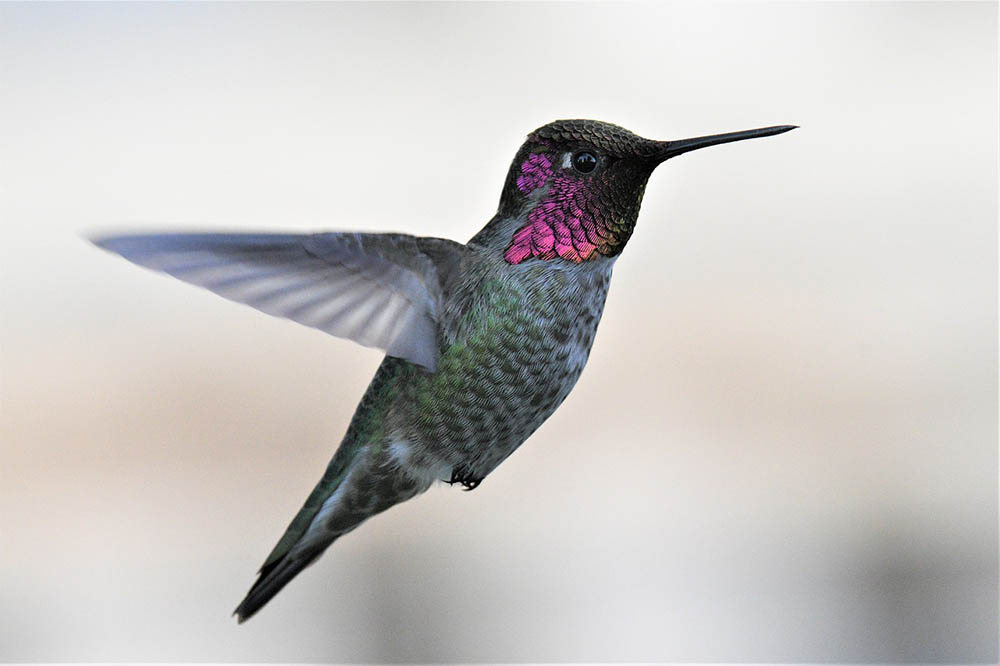
| Scientific Name | Calypte anna |
| Population Size | 1.5 million |
| Habitat | Gardens, chaparral, and open woods |
| Diet | Nectar and insects |
Who doesn’t love seeing hummingbirds? While these birds only migrate through California, they’re still relatively abundant in the state. If you’re trying to spot them, put out a nectar bird feeder for them to feed from, and keep an open eye out during the warm months!
8. American Crow

| Scientific Name | Corvus brachyrhynchos |
| Population Size | 31 million |
| Habitat | Fields, open woodlands, forests, parking lots, towns, and cities |
| Diet | Insects, berries, fruit, eggs, carrion, and garbage |
The American crow isn’t many people’s favorite bird, but there are quite a few of them in California. They’re especially abundant in cities and towns, as they eat just about anything. They thrive off humans’ leftovers, and many crows hang out around areas with plenty activity to take advantage of this.
9. California Towhee

| Scientific Name | Melozone crissalis |
| Population Size | 9 million |
| Habitat | Chaparral, backyards, and neighborhoods |
| Diet | Seeds and insects |
While they live in wild areas too, you’ll commonly see these birds in backyards and neighborhoods. If you want them around, just put out a few bird feeders with seeds!
10. Northern Mockingbird
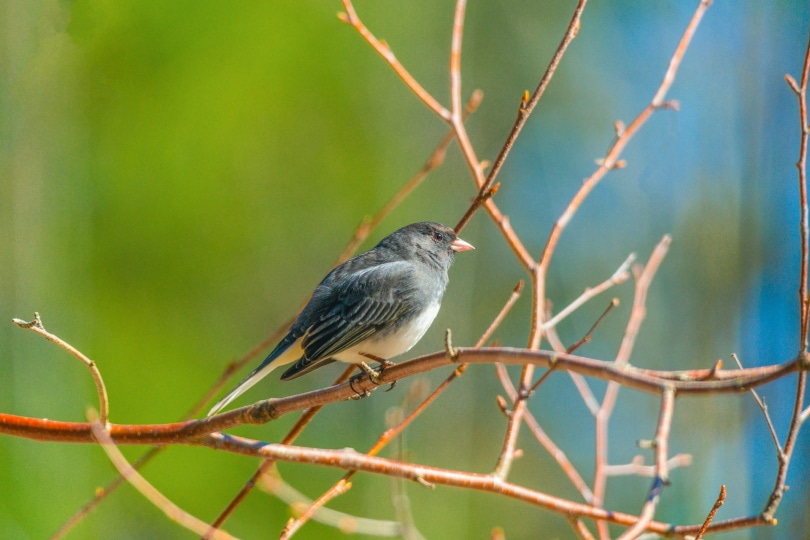
| Scientific Name | Mimus polyglottos |
| Population Size | 45 million |
| Habitat | Forest edges, parks, and suburbs |
| Diet | Insects and berries |
Mockingbirds love open areas where humans hang out. You’ll commonly see them in parks and suburbs, but you can also find them near forest edges, especially by campgrounds. Mockingbirds primarily eat insects, but they will eat berries and other small fruits too.
11. California Scrub-Jay
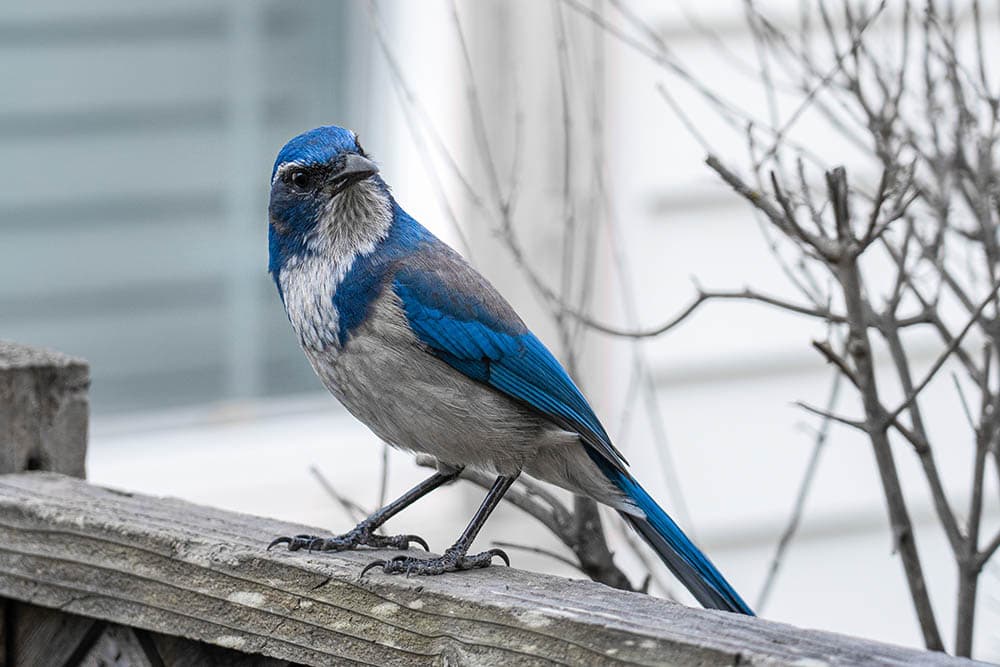
| Scientific Name | Aphelocoma californica |
| Population Size | 1.8 million |
| Habitat | Chaparral, open oak woodlands, dry mountain canyons, and backyards |
| Diet | Insects, fruits, nuts, berries, and seeds |
With just 1.8 million birds, you might not see too many California scrub-jays around. However, since about all their range is in the state, they’re quite common, especially in the northern parts of California.
12. Red-Winged Blackbird
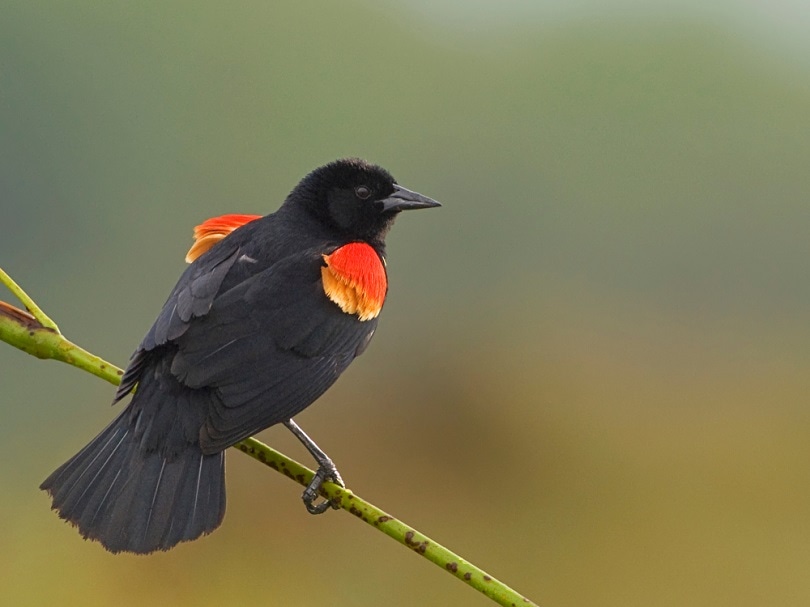
| Scientific Name | Agelaius phoeniceus |
| Population Size | 210 million |
| Habitat | Fresh and saltwater marshes, crop fields, feedlots, pastures, and near standing water |
| Diet | Insects and seeds |
There are tons of red-winged blackbirds in California, but you’ll need to find standing water to spot them. They primarily eat small flying insects, so any areas with those populations tend to attract red-winged blackbirds.
13. American Robin
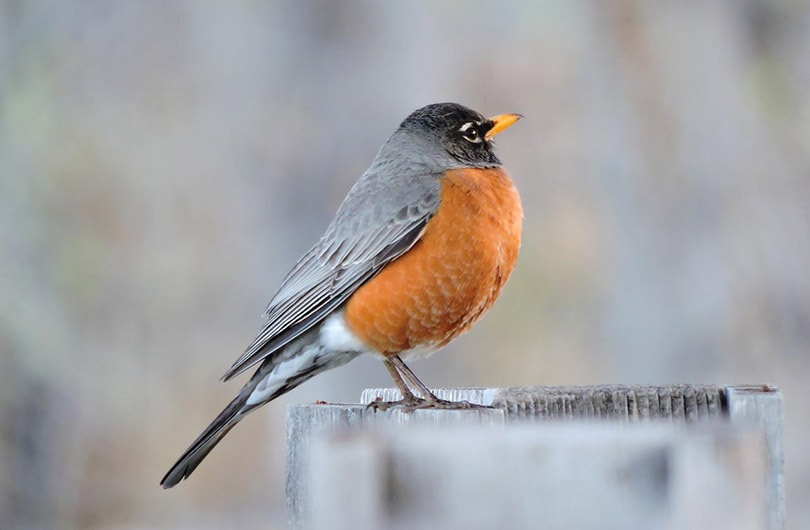
| Scientific Name | Turdus migratorius |
| Population Size | 370 million |
| Habitat | Woodlands, suburban backyards, parks, and grasslands |
| Diet | Insects, berries, and earthworms |
One of the most common birds that you’ll spot in a California backyard is the American robin. Not only are there many of these birds out there, but they also love the ecosystem around backyards and parks. They eat insects and berries, and you might see them prancing around your yard trying to attract earthworms.
14. European Starling
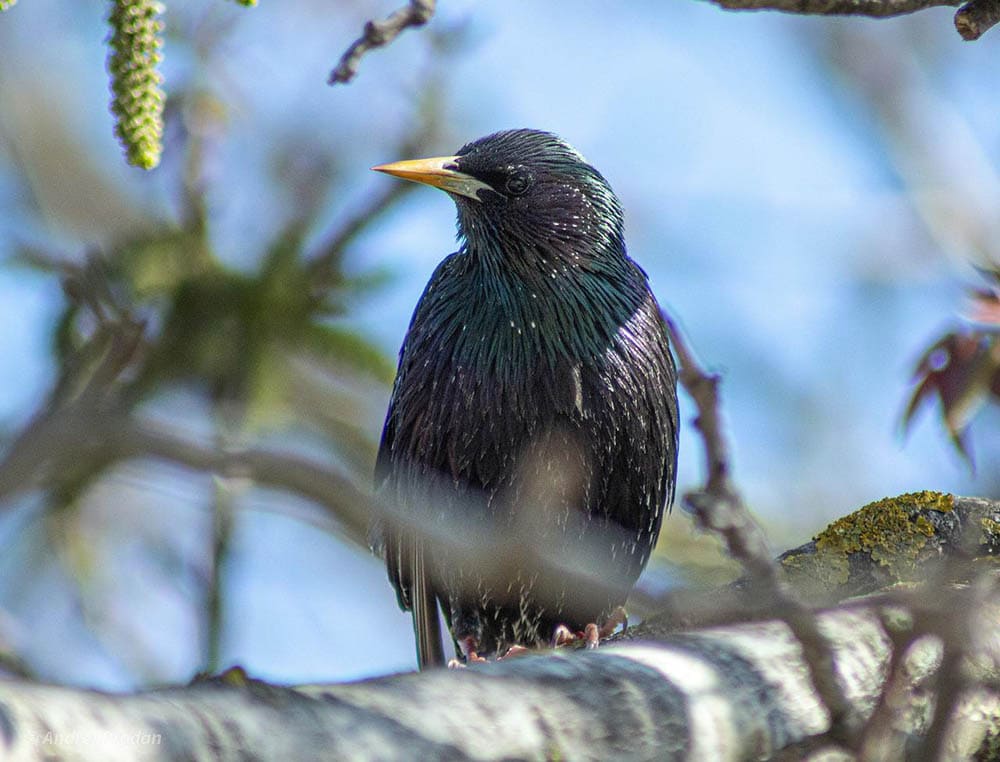
| Scientific Name | Sturnus vulgaris |
| Population Size | 200 million |
| Habitat | Lowland non-mountainous terrain |
| Diet | Insects, berries, fruits, and seeds |
While the European starling started out as an invasive species to North America, they’re now so numerous that they’re easy to spot. They thrive in low-land areas, so how many you’ll see depends on what part of the state you are in.
15. Lesser Goldfinch
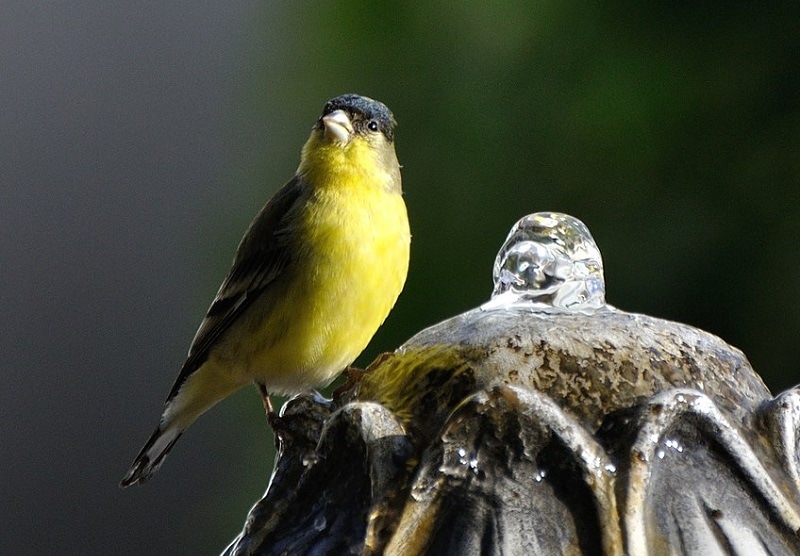
| Scientific Name | Spinus psaltria |
| Population Size | 7 million |
| Habitat | Brushy country, open woods, wooded streams, and gardens |
| Diet | Seeds |
Do you want to see a lesser goldfinch? Put out bird feeders with seeds, seeds, and more seeds! Those are the only things that these birds eat, and they live in a wide array of habitats.
16. Northern Flicker
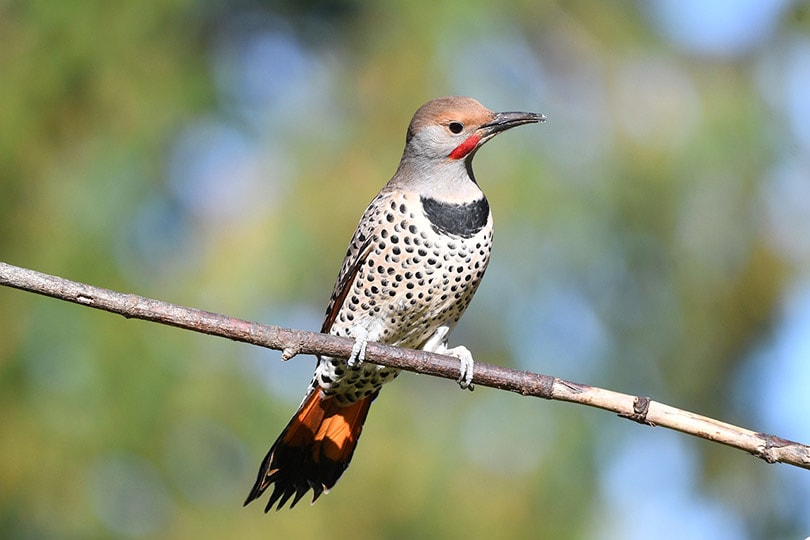
| Scientific Name | Colaptes auratus |
| Population Size | 16 million |
| Habitat | Woodlands, forest edges, open fields, city parks, and suburbs |
| Diet | Insects, fruits, and seeds |
The northern flicker is a versatile bird that you can find in a variety of habitats across the state. From woodlands to city parks and suburbs, you can find northern flickers there. They primarily eat insects, but you’ll also see them eat fruits and seeds during the winter months.
17. American Goldfinch
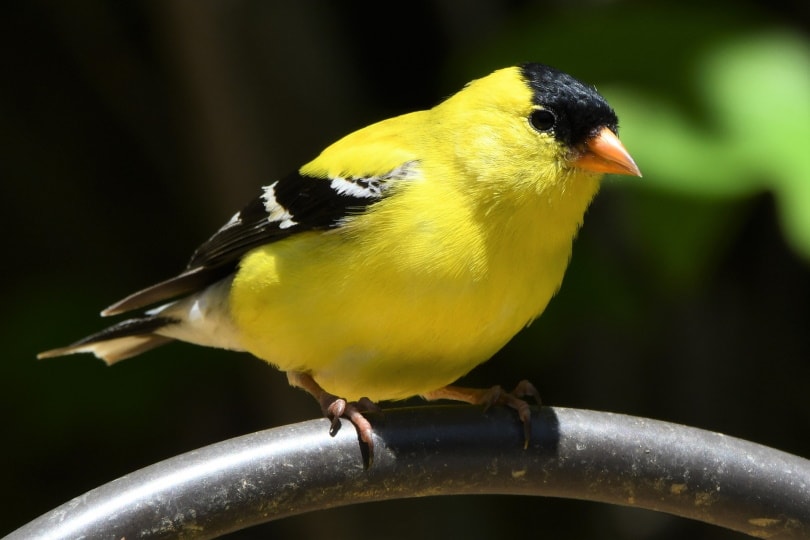
| Scientific Name | Spinus tristis |
| Population Size | 24 million |
| Habitat | Weedy fields, floodplains, orchards, and backyards |
| Diet | Seeds and insects |
While you likely won’t be out in too many weedy fields or floodplains to spot many American Goldfinches, they’ve started to adapt to human interventions in the ecosystem, and you can see them in both orchards and backyards. The American goldfinch loves seeds, so they are a bird that you can attract to your backyard with the right feeder.
18. Barn Swallow

| Scientific Name | Hirundo rustica |
| Population Size | 190 million |
| Habitat | Fields, parks, roadway edges, marshes, meadows, ponds, and coastal waters |
| Diet | Insects |
Barn swallows stay up high and thrive on flying insects. You won’t see these birds in city or suburban backyards that often, but if you’re out in the country, you can spot them. They love perching by standing water, so look near marshes, ponds, meadows, or even coastal waters.
19. Dark-Eye Junco

| Scientific Name | Junco hyemalis |
| Population Size | 630 million |
| Habitat | Coniferous and deciduous forests |
| Diet | Seeds and insects |
There are many dark-eyed junco birds out there, but if you want to spot one, you’ll need to check out wooded areas. They love both coniferous and deciduous forests, so anywhere with trees is where they thrive. There are plenty of wooded areas in California, especially in the northern part of the state.
20. Chestnut-Backed Chickadee
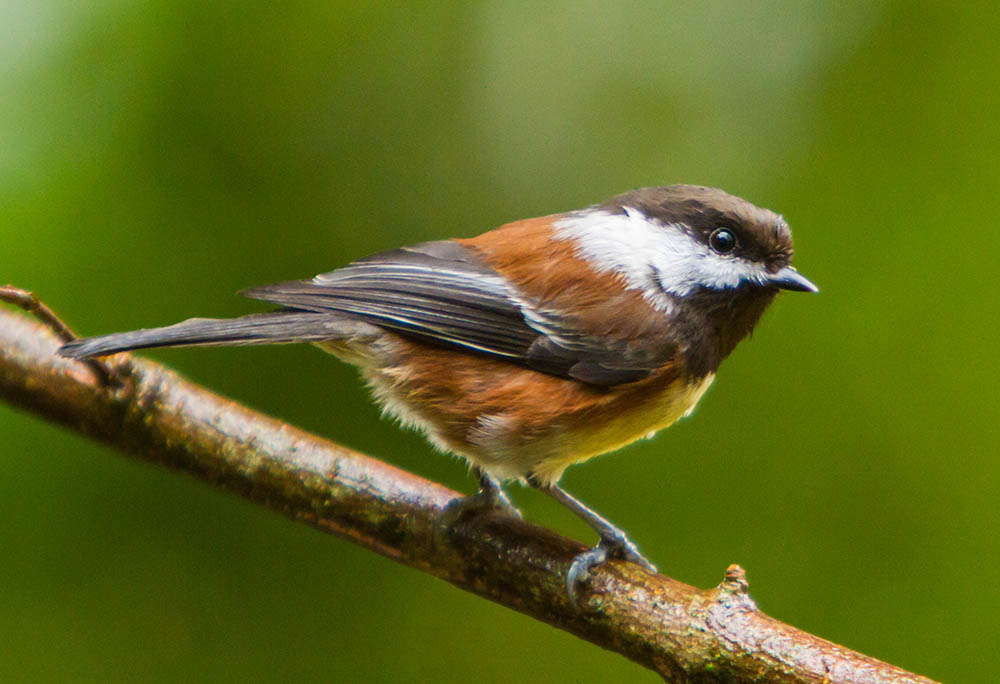
| Scientific Name | Poecile rufescens |
| Population Size | 9.7 million |
| Habitat | Coniferous forests |
| Diet | Insects, seeds, and berries |
The chestnut-backed chickadee is a beautiful bird that you can find in coniferous forests in California. While you likely won’t be able to coax them too far from the forest during the warm months, when things start to cool down, you might be able to get a few to a bird feeder with seeds.
21. Western Bluebird

| Scientific Name | Sialia mexicana |
| Population Size | 6.7 million |
| Habitat | Pine and oak woods, streamside groves, and semi-open habitats |
| Diet | Insects and berries |
Who doesn’t love a beautiful bluebird? The western bluebird is just that in California. You can find them in both wooded areas and semi-open habitats, but it’s not unheard of to see them in suburban areas and backyards. They eat insects and berries, though, so there’s not too much that you can do to attract them to your backyard.
22. Bushtit

| Scientific Name | Psaltriparus minimus |
| Population Size | 3.2 million |
| Habitat | Chaparral, oak, pinyon-juniper, and pine-oak woods; streamside groves; suburbs; and city parks |
| Diet | Insects |
The bushtit is a small and adorable bird that you can find in tons of different California environments. They also love suburbs and city parks, so it’s also common to see them in backyards. Just don’t expect to see them at your feeders, since they primarily eat insects.
23. Bewick’s Wren

| Scientific Name | Thryomanes bewickii |
| Population Size | 5.6 million |
| Habitat | Open woods, thickets, towns, and gardens |
| Diet | Insects |
The Bewick’s wren lives in different environments, so you can see them in various town and garden environments. You’ll also see them in thickets and open wooded areas. While you can see them in your backyard, they don’t eat at bird feeders because they prefer to chow down on insects.
24. Nuttall’s Woodpecker

| Scientific Name | Picoides nuttallii |
| Population Size | 100 to 200,000 |
| Habitat | Wooded canyons, foothills, and river woods |
| Diet | Insects |
With only 100,000 to 200,000 Nuttall’s woodpeckers left in the wild, this is likely the hardest bird on this list to spot. Complicating the matter is that they only live in mature forests. But if your home is in or near a well-established forest, there’s technically a chance of you spotting one in your backyard.
25. Acorn Woodpecker

| Scientific Name | Melanerpes formicivorus |
| Population Size | 7.5 million |
| Habitat | Oak country |
| Diet | Acorns and insects |
If you’re looking to spot a woodpecker, the Acorn woodpecker is the easiest to spot in California. They only live near oak trees, though, so you’ll need to have a few in your area. The acorn woodpecker eats both acorns and insects, which is why they need the oak trees to survive!
26. Oak Titmouse

| Scientific Name | Baeolophus inornatus |
| Population Size | 900,000 |
| Habitat | Oak or oak-pine woodlands |
| Diet | Insects, nuts, and seeds |
The oak titmouse is a tiny and adorable bird that you can find in different regions of California. You’ll only find them near oak trees, hence the name, but they eat various insects and seeds. Just don’t expect to see too many of these adorable birds, as their total population number sits under 1 million.
27. Cliff Swallow

| Scientific Name | Petrochelidon pyrrhonota |
| Population Size | 40 million |
| Habitat | Canyons, hills, valleys, and cliffs |
| Diet | Insects |
If you’re near a steep, vertical area in California, there’s a good chance that you’ll spot a few cliff swallows. While once you could only find these birds near cliffs and canyons, they’ve adapted, and now you can find them building their nests at the tops of large buildings.
28. Steller’s Jay

| Scientific Name | Cyanocitta stelleri |
| Population Size | 2.8 million |
| Habitat | Evergreen forests, campgrounds, parklands, and backyards |
| Diet | Seeds, acorns, nuts, seeds, berries, fruits, and insects |
With unique head feathers and beautiful blue coloring, a Steller’s jay is quite recognizable. They love seeds, so it’s not uncommon to see them visiting backyard feeders and hanging out in parks and campgrounds.
29. Common Raven

| Scientific Name | Corvus corax |
| Population Size | 16 million |
| Habitat | Open and forest habitats |
| Diet | Insects, rodents, amphibians, eggs, carrion, and garbage |
While the raven might be a pretty black bird to some people, the truth is that they’re scavengers just like crows. They eat just about anything, but unlike crows, you’ll only find them in open habitats. Unless there’s an appealing food source in your yard, chances are that they won’t hang out there.
30. Golden-Crowned Sparrow

| Scientific Name | Zonotrichia atricapilla |
| Population Size | 4 million |
| Habitat | Shrubby habitats and high mountains |
| Diet | Seeds, fruits, buds, and flowers |
If you live in an area with plenty of shrubberies or in the northern mountain region, the chances of you spotting a golden-crowned sparrow is high, especially if you put out a bird feeder with seeds.
In Conclusion
With so many different environments and birds in California, if you’re into birdwatching, it’s hard to find a better state. It has everything from woodpeckers to hummingbirds.
Hopefully, now you have a better idea of what’s out there, and maybe the next time that you spot a bird in your backyard, you’ll know exactly what you’re looking at!
Featured Image Credit: GeorgiaLens, Pixabay
Table of Contents
- The 30 Most Common Backyard Birds in California
- 1. House Finch
- 2. White-Crowned Sparrow
- 3. Yellow-Rumped Warbler
- 4. Song Sparrow
- 5. Black Phoebe
- 6. Mourning Dove
- 7. Anna’s Hummingbird
- 8. American Crow
- 9. California Towhee
- 10. Northern Mockingbird
- 11. California Scrub-Jay
- 12. Red-Winged Blackbird
- 13. American Robin
- 14. European Starling
- 15. Lesser Goldfinch
- 16. Northern Flicker
- 17. American Goldfinch
- 18. Barn Swallow
- 19. Dark-Eye Junco
- 20. Chestnut-Backed Chickadee
- 21. Western Bluebird
- 22. Bushtit
- 23. Bewick’s Wren
- 24. Nuttall’s Woodpecker
- 25. Acorn Woodpecker
- 26. Oak Titmouse
- 27. Cliff Swallow
- 28. Steller’s Jay
- 29. Common Raven
- 30. Golden-Crowned Sparrow
- In Conclusion
About the Author Robert Sparks
Robert’s obsession with all things optical started early in life, when his optician father would bring home prototypes for Robert to play with. Nowadays, Robert is dedicated to helping others find the right optics for their needs. His hobbies include astronomy, astrophysics, and model building. Originally from Newark, NJ, he resides in Santa Fe, New Mexico, where the nighttime skies are filled with glittering stars.
Related Articles:
Monocular vs Telescope: Differences Explained (With Pictures)
10 Types of Hummingbirds in Arkansas (With Pictures)
8 Types of Hummingbirds in Nebraska (With Pictures)
5 Types of Hummingbirds in Idaho (With Pictures)
3 Types of Hummingbirds in Mississippi (With Pictures)
8 Types of Hummingbirds in Kansas (With Pictures)
5 Types of Hummingbirds in West Virginia (With Pictures)
5 Types of Hummingbirds in Ohio (With Pictures)
